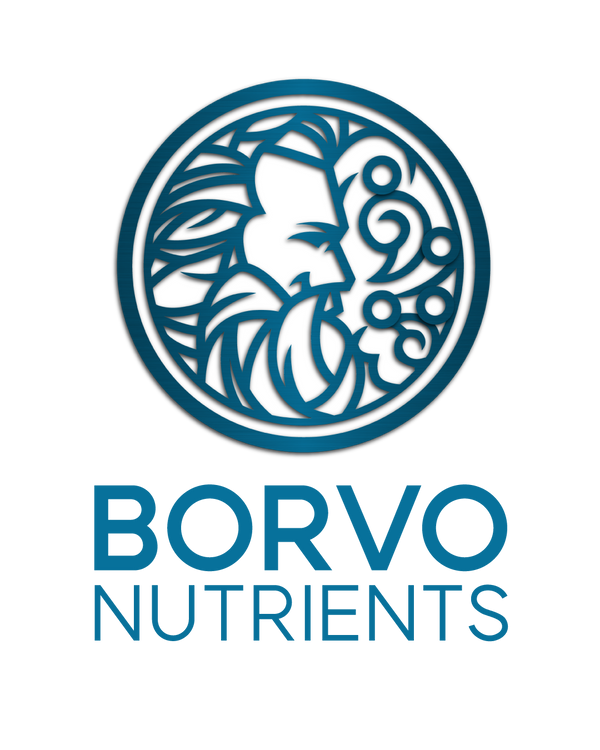Pigments in Seaweed and their benefits
Share
The Pigments in Seaweed
Seaweeds are photosynthetic organisms and they can be split into three different colour categories; red, green and brown.
As photosynthetic organisms, seaweed contains a number of pigments that are responsible for the variety of colours observed in brown, green and red seaweeds. Together, these pigments allow seaweed to absorb the light necessary for photosynthesis at depths that have various degrees of light intensity. These pigments can be divided into three main groups which include chlorophylls, phycobiliproteins and carotenoids and have a number of health benefits when consumed. Research concerning these seaweed-derived bioactive compounds has increased significantly in recent years and there is currently considerable interest in the anti-oxidant, anti-obesity and anti-cancer activity of macroalgal pigments.
Chlorophyll: The Green Pigment
Chlorophyll is a green pigment found in both algae and land plants and is necessary for photosynthesis as it facilitates the absorption of energy from light. Chlorophyll and its derivatives such as pheophytin, pyropheophytin and pheophorbide are associated with a number of health benefits including anti-oxidant and anti-mutagenic activity which may help to prevent cancer (Chernomorsky et al., 1999). It is also likely that chlorophyll-derived compounds can bind certain cancer-causing chemicals, such as heterocyclic amines in the digestive tract, thus reducing their absorption (Breinholt et al., 1995; Dashwood et al., 1996).
Phycobiliproteins: The Red-Brown Pigment
Phycobiliproteins are water-soluble pigments that are found in red seaweeds and include phycoerythrin, phycocyanin and allo-phycocyanin. Previous scientific studies have reported that this group of proteins possess anti-inflammatory, liver protecting, anti-viral, anti-tumour, serum lipid reducing and anti-oxidant activity (Sekar and Chandramohan, 2008). Phycobiliproteins are found in red seaweeds such as Chondrus chrispus and Palmaria palmata and are responsible for the red-brown colour of these species.
Carotenoids: β-carotene, Fucoxanthin and Tocopherol (amongst others!)
Carotenoids are important pigments that are found in seaweed but are also present in land plants, microalgae and photosynthetic bacteria. As animals (and humans) cannot produce carotenoids, these pigments must be obtained from the diet. Over 600 carotenoids have been identified but prominent examples found in seaweed include β-carotene and fucoxanthin.
Examples of other carotenoids which are found in seaweed include astaxanthin, violaxanthin, tocopherol, zeaxanthin and lutein (Holdt and Kraan, 2011).
Carotenoids are potent anti-oxidants which prevent oxidative damage to cellular components caused by reactive oxygen species. As reactive oxygen species are associated with the development of many chronic diseases it is not surprising that carotenoids have been linked with the prevention of many chronic diseases (Cooper et al., 1999).
β-carotene: The well-known carotenoid
β-carotene is a well-known carotenoid that is present in seaweeds including Ascophyllum nodosum, Fucus vesiculosus, Fucus serratus, Laminaria digitata, Ulva sp. and Sargassum sp. at various levels. β-carotene is an antioxidant that has been shown to reduce the risk of cardiovascular disease and possibly certain types of cancer (Holdt and Kraan, 2011).
Fucoxanthin: A carotenoid with promising signs of anti-cancerous properties
Fucoxanthin is another carotenoid present in brown seaweeds such as Ascophyllum nodosum and Laminaria digitata. This pigment has received much interest in recent years due to its reported anti-obesity and anti-cancer activity. There is scientific evidence to suggest that fucoxanthin prevents the cellular proliferation of cancer cells in studies investigating prostate, colon, liver, bladder, gastric and breast cancer and also lymphoma. Fucoxanthin has also been shown to induce apoptosis which plays an important role in the prevention of cancer development (Rengarajan et al., 2013).
The presence of health-promoting compounds such as the above mentioned pigments in seaweed makes it an excellent choice for inclusion in pet food. This should enable pet owners to contribute to pet health using a 100% natural and sustainable resource.
